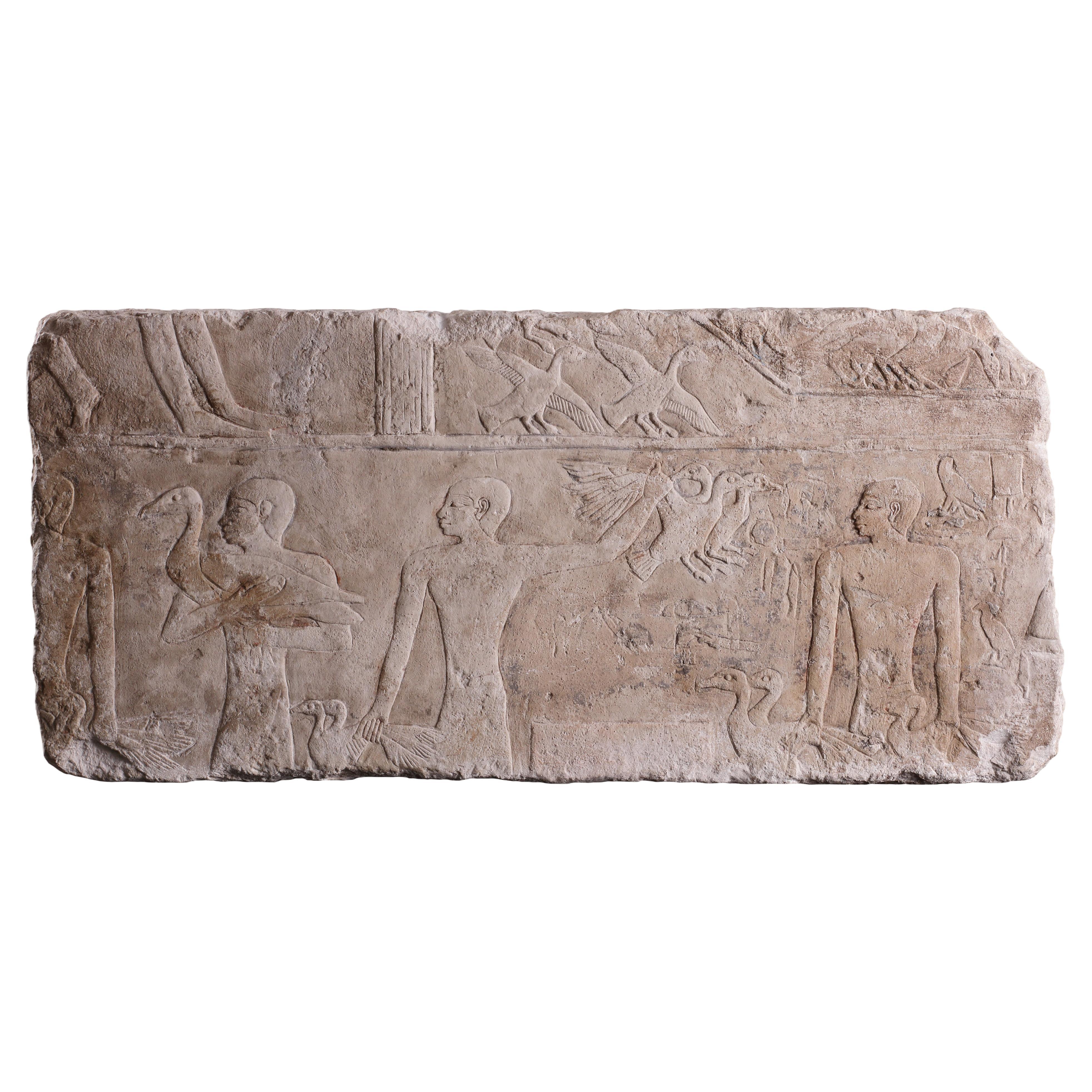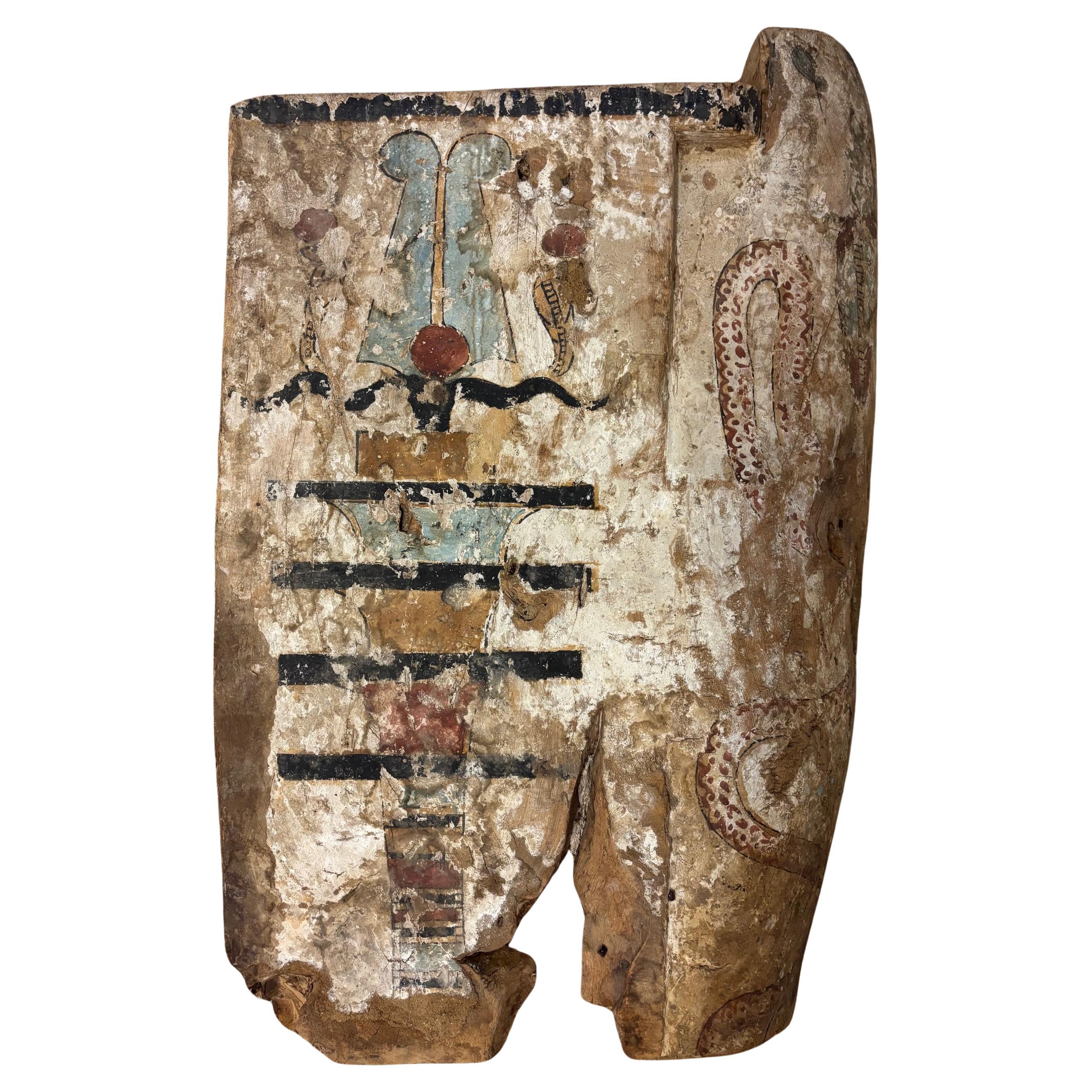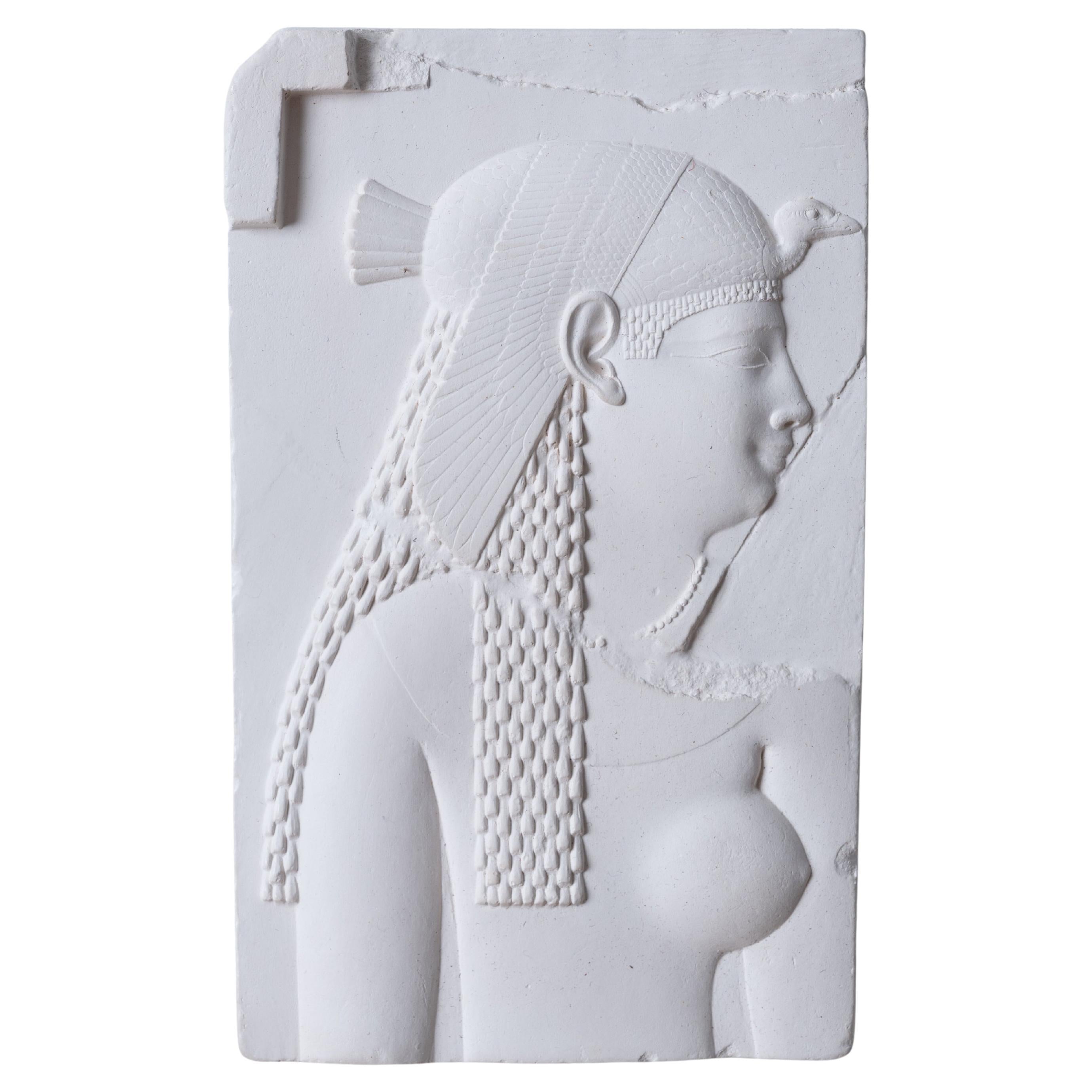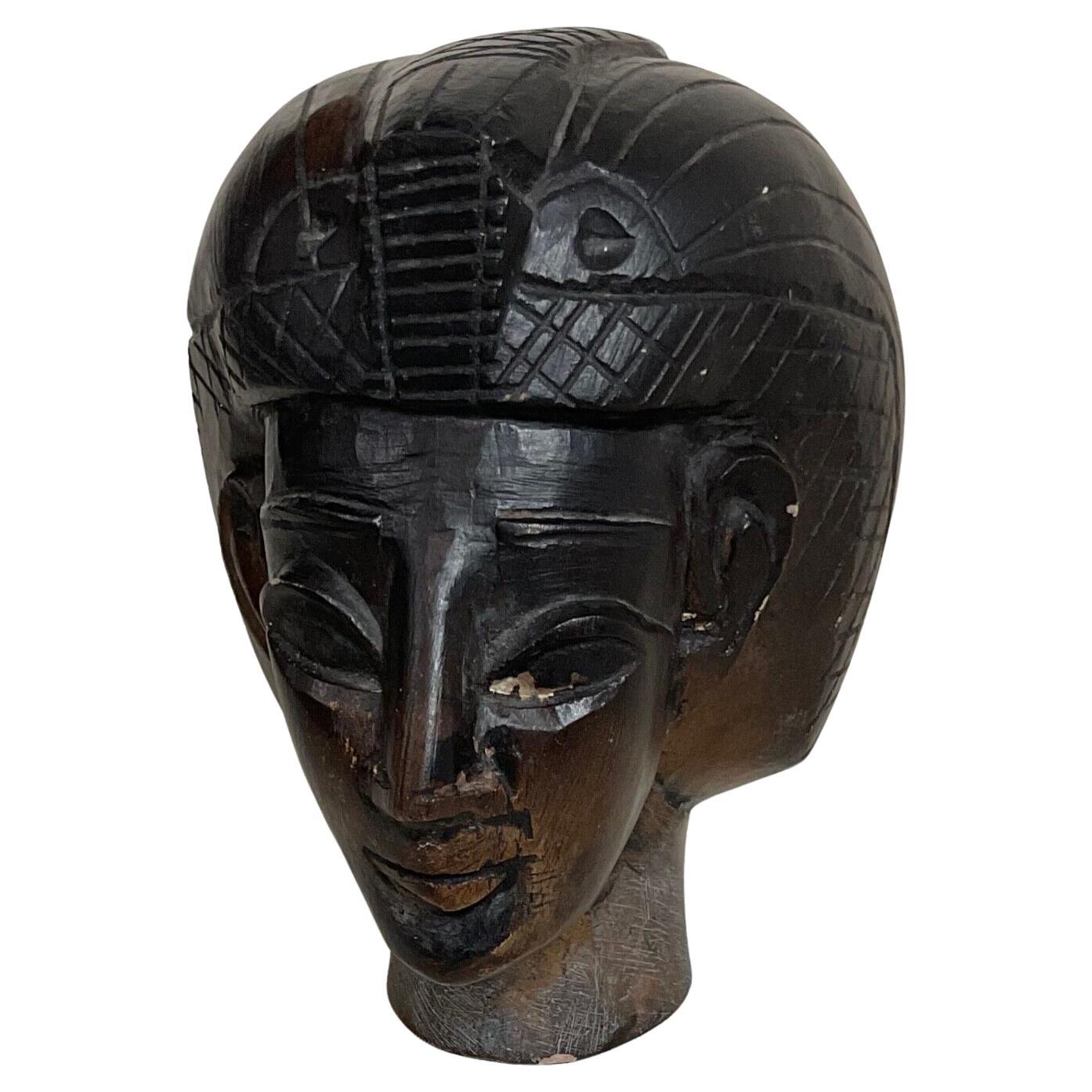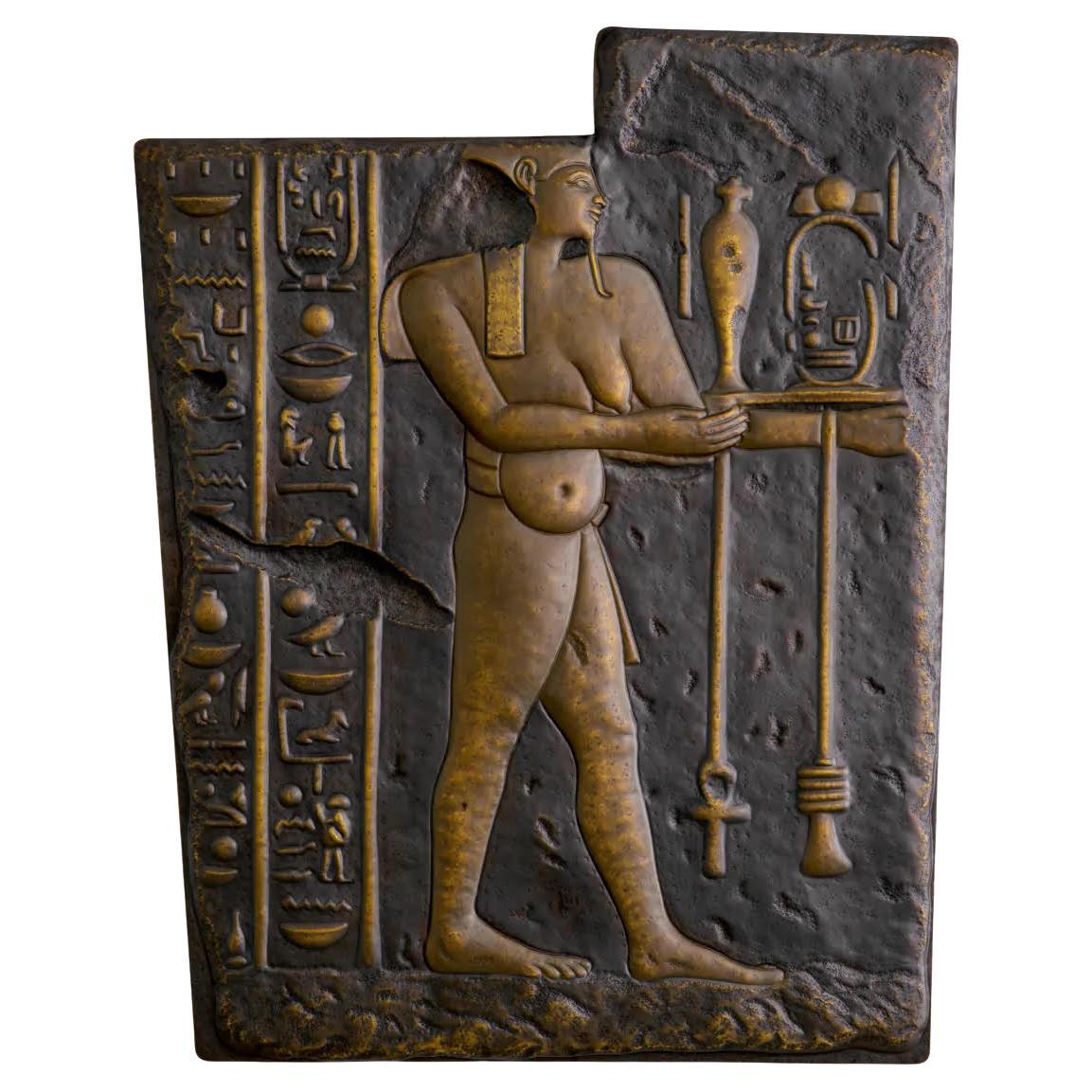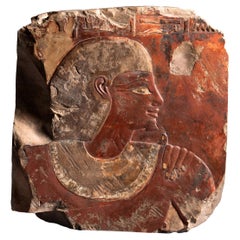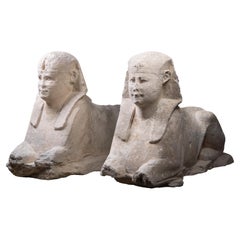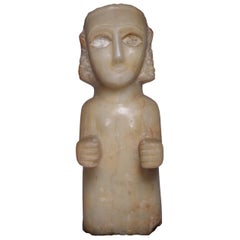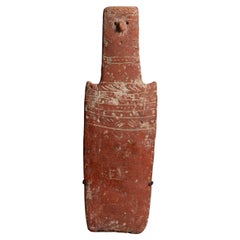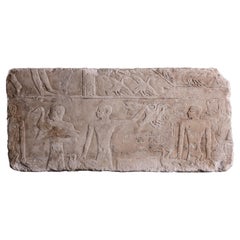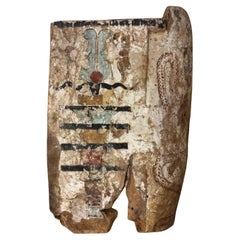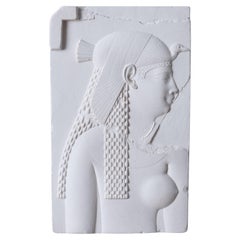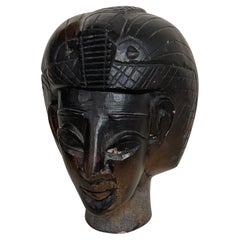Items Similar to Ancient Egyptian Limestone Relief with Hieroglyphs
Want more images or videos?
Request additional images or videos from the seller
1 of 7
Ancient Egyptian Limestone Relief with Hieroglyphs
$16,493.40
£12,000
€14,042.23
CA$22,728.73
A$25,012.11
CHF 13,116.38
MX$303,554.44
NOK 163,952.65
SEK 155,217.74
DKK 104,810.61
About the Item
Egyptian New Kingdom Relief Fragment
Carved limestone
New Kingdom, circa 1550-1069 BC
12 x 16.5 cm
This beautiful fragment preserves three columns of neat hieroglyphs deeply carved in limestone; each column separated from the other by an incised groove. It would have once accompanied pictorial depictions on the walls of a temple or tomb. Remains of pinkish red pigment are visible.
As ancient sources show, hieroglyphs have fascinated visitors to Egypt since the earliest times. The Egyptians considered this intricate script, which they used continuously for almost four millennia, to represent the “words of the gods”, or mdju netjer. Whether monumental or miniature, the elaborate and beautiful hieroglyphs can be considered works of art in their own right.
Provenance:
Albert Newall collection, Cape Town, South Africa, exported to the UK during the 1970s
Private collection, UK, by descent from the above.
- Dimensions:Height: 4.73 in (12 cm)Diameter: 6.5 in (16.5 cm)
- Materials and Techniques:
- Place of Origin:Egypt
- Period:
- Date of Manufacture:Circa 1550 BC
- Condition:Wear consistent with age and use.
- Seller Location:London, GB
- Reference Number:Seller: 425651stDibs: LU1052244853032
About the Seller
5.0
Recognized Seller
These prestigious sellers are industry leaders and represent the highest echelon for item quality and design.
Established in 2007
1stDibs seller since 2014
103 sales on 1stDibs
Typical response time: 6 hours
Associations
LAPADA - The Association of Arts & Antiques DealersInternational Confederation of Art and Antique Dealers' AssociationsThe British Antique Dealers' Association
- ShippingRetrieving quote...Shipping from: London, United Kingdom
- Return Policy
Authenticity Guarantee
In the unlikely event there’s an issue with an item’s authenticity, contact us within 1 year for a full refund. DetailsMoney-Back Guarantee
If your item is not as described, is damaged in transit, or does not arrive, contact us within 7 days for a full refund. Details24-Hour Cancellation
You have a 24-hour grace period in which to reconsider your purchase, with no questions asked.Vetted Professional Sellers
Our world-class sellers must adhere to strict standards for service and quality, maintaining the integrity of our listings.Price-Match Guarantee
If you find that a seller listed the same item for a lower price elsewhere, we’ll match it.Trusted Global Delivery
Our best-in-class carrier network provides specialized shipping options worldwide, including custom delivery.More From This Seller
View AllEgyptian Stone Relief of Man and Wife
Located in London, GB
This painted limestone relief is an exquisite example of New Kingdom relief carving from the apogee of Egyptian artistic production. Carved in raised relief - a labour-intensive tech...
Category
Antique 15th Century and Earlier Egyptian Egyptian Busts
Materials
Limestone
Ancient Egyptian Monumental Temple Sphinxes
Located in London, GB
A pair of monumental limestone sphinxes of Pharaoh Nectanebo I, from the processional avenue of the Serapeum of Memphis, 30th Dynasty, circa 379 - 360 BC.
The sphinxes of the Serapeum have captivated travellers since Roman times. However, despite their significance, they are conspicuously absent from the collections of most major museums. Indeed, their existence in private hands is so improbable, and their imitations so numerous, that the present sphinxes were assumed to be modern copies throughout their recent ownership history. Finally recognised and conserved after an extraordinary chance discovery at a garden furniture sale...
Category
Antique 15th Century and Earlier Egyptian Egyptian Figurative Sculptures
Materials
Limestone
Ancient South Arabian Alabaster Statue
Located in London, GB
South Arabian Calcite female figure
3rd Century BC to 1st century A.D.
Calcite Alabaster
height: 30.5 cm
A magnificent alabaster female figure, a f...
Category
Antique 15th Century and Earlier Yemeni Figurative Sculptures
Materials
Alabaster
Cypriot Bronze Age Terracotta Plank Idol
Located in London, GB
This extremely well-preserved, stylised Cypriot plank idol is an iconic form of human representation from Bronze Age Cyprus. Made from burnished earthenware with lime-filled incision...
Category
Antique 15th Century and Earlier Cypriot Prehistoric Abstract Sculptures
Materials
Terracotta
Fossilised Dinosaur Skin
Located in London, GB
Fossilised Skin of a Brachylophosaurus
Approx. 80 Million y/o
An exceptional specimen of fossilised dinosaur skin, preserving the hexagonal scales of...
Category
Antique 15th Century and Earlier American Natural Specimens
Materials
Stone
Natural Gogotte Formation
Located in London, GB
A magnificent example of a gogotte formation composed of thick swirls and folds of sparkling sandstone. Discovered in the Oligocene sand dunes of Fontainebleau, France, formed circa 30 million years before present or later.
The incredible, almost otherworldly appearance of gogottes may easily be mistaken for the work of a most talented artist. In fact, these sandstone sculptures are entirely natural in origin. They have been found in multiple locations but those from Fontainebleau, such as the present example, are the most remarkable. Thirty-five million years ago, a sea covered what is now the forest of Fontainebleau, and dunes of exceptionally fine and homogenous sand formed. As silica-rich water filtered through this sand, it turned into stone. The flow of water finely modelled the sandstone into the aesthetic concretions we now know as gogottes. These are rare and are only found sporadically several metres deep into the ground. They owe their sparkling white appearance to the extreme and unmatched purity of the Fontainebleau sand, sometimes reaching a composition of 99.9% silica. Each of them is unique – a masterpiece slowly fashioned by the hands of Nature.
The intriguing name of “gogotte” was coined by French geologist Claude Guillemin (1923- 1994), who was inspired by the children’s book series Babar the Elephant. In one of the books, a group of monsters called Gogottes are shown hiding behind rocks. These rocks reminded Guillemin of the sandstone concretions...
Category
Antique 15th Century and Earlier Natural Specimens
Materials
Other
You May Also Like
A Fine and Large Egyptian Limestone Relief Carved in Shallow Relief
Located in London, GB
A Fine and Large Egyptian Limestone Relief Carved in Shallow Relief
Traces of original polychrome
Old Kingdom / 5th Dynasty / 2454 - 2311 B.C
Size: 32cm high, 70cm wide, 5cm deep - 12½ ins high, 27½ ins wide, 2 ins deep
Provenance:
Ex Private Swiss collection, acquired mid 1960s and thence by descent
Ex Rupert Wace Limited London
Ex Private London collection
cf A...
Category
Antique 15th Century and Earlier Egyptian Sculptures and Carvings
Materials
Limestone
FRAGMENT OF SARCOPHAGUS, Egypt, end of the New Kingdom to Late Period.
Located in Nice, Cote d' Azur
FRAGMENT OF SARCOPHAGUS
Painted with the djed pillar topped with the atef crown.
This type of symbol was frequently painted on the bottoms of sarcophagus vats.
H. 79,5 cm
Egypt, end ...
Category
Antique 15th Century and Earlier Egyptian Egyptian Animal Sculptures
Materials
Wood
Egyptian Goddess Plaster Relief
Located in Savannah, GA
A late period - Ptolemaic period plaster relief depicting a Goddess or Queen from the Metropolitan Museum of Art after the original.
4 ½ inches wide by 7 ¼ inches tall by 1 inch ...
Category
20th Century American Wall-mounted Sculptures
Materials
Plaster
Antique 20th Century Egyptian Stone Sculpture, Bas-Relief - 2Y530
Located in Bordeaux, FR
This antique Egyptian stone sculpture from the 20th century is an original work of art crafted with remarkable skill. Featuring a bas-relief design, it captures the timeless elegance...
Category
20th Century Antiquities
Materials
Stone
Wall Decoration, Bas Relief in Patinated Bronze in the Taste of Ancient Egypt.
Located in Saint-Ouen, FR
Wall decoration, bas relief in patinated bronze in the taste of ancient Egypt, 20th century.
Wall decoration, bas relief in the taste of ancient Egypt in patinated bronze. Originall...
Category
21st Century and Contemporary Egyptian Egyptian Decorative Art
Materials
Bronze
Grand Tour Statue of Pharaoh Hatshepsut After the Ancient Model
Located in Montreal, QC
Grand Tour statue of Pharaoh Hatshepsut after the ancient model.
Hatshepsut was the fifth pharaoh of the Eighteenth Dynasty of Egypt and was the second historically confirmed female pharaoh, the first being Sobekneferu. The authentic ancient sculpture of Hatshepsut is located in Deir el-Bahri, Thebes, Egypt. Cast painted plaster. Provenance: The Collection of Charles de Beistegui, Château de Groussay. Charles de Beistegui (1894-1970), an enigmatic interior decorator whose passport was Spanish and whose wealth came from his family’s Mexican silver mines. Beistegui to indulge himself in the homes he decorated, such as his Chateau de Groussay...
Category
Antique Early 1900s Egyptian Egyptian Figurative Sculptures
Materials
Plaster
